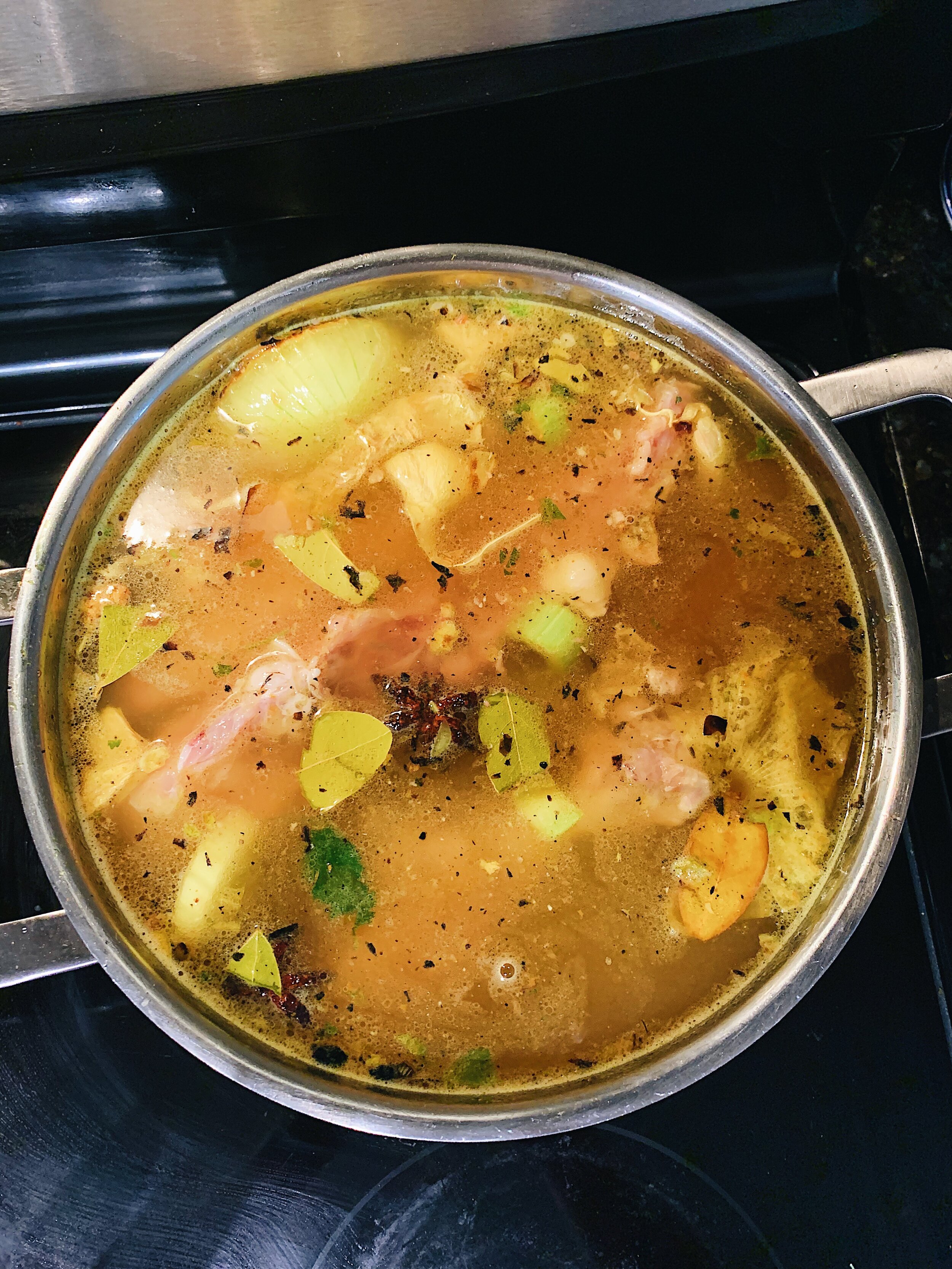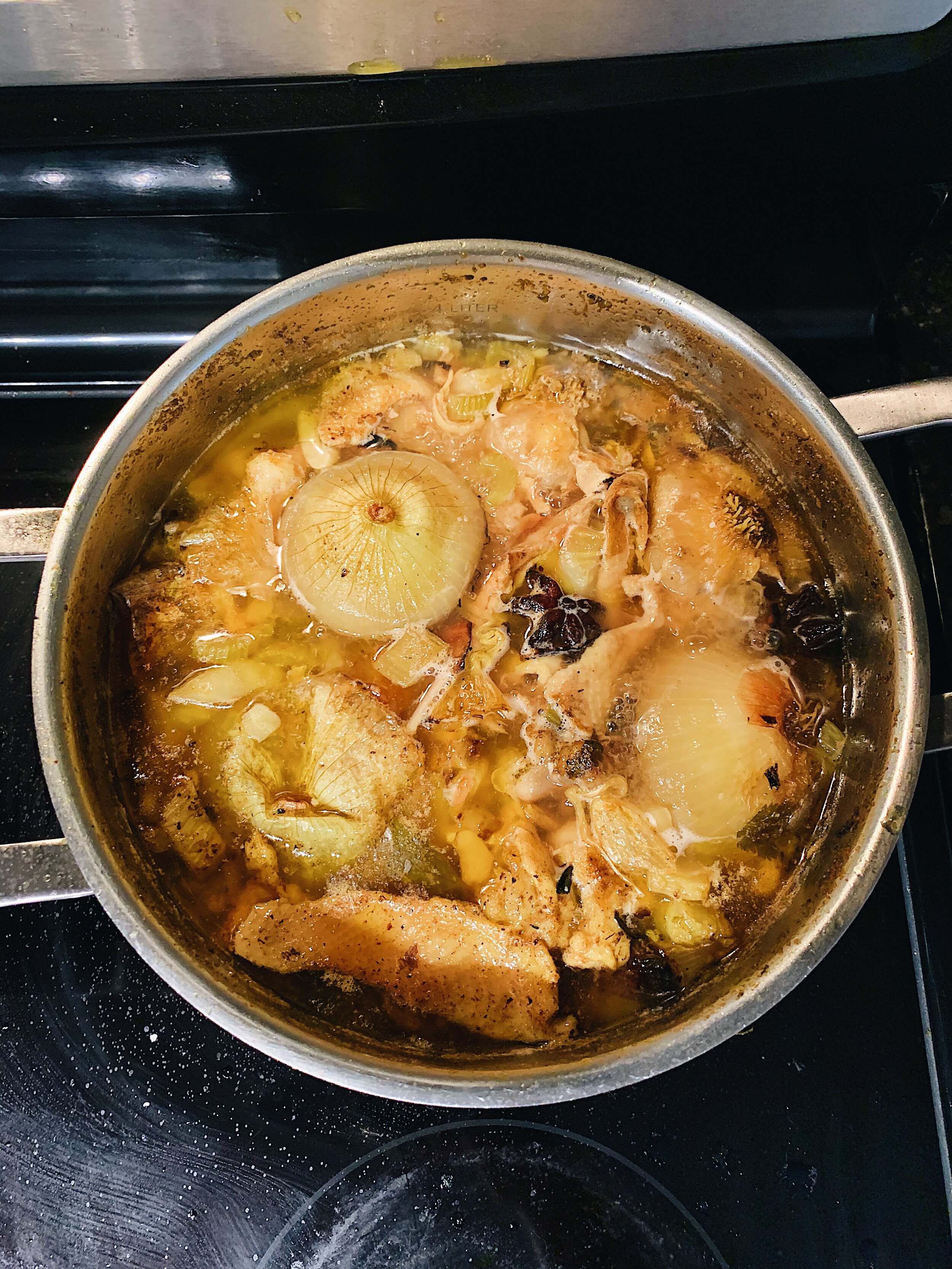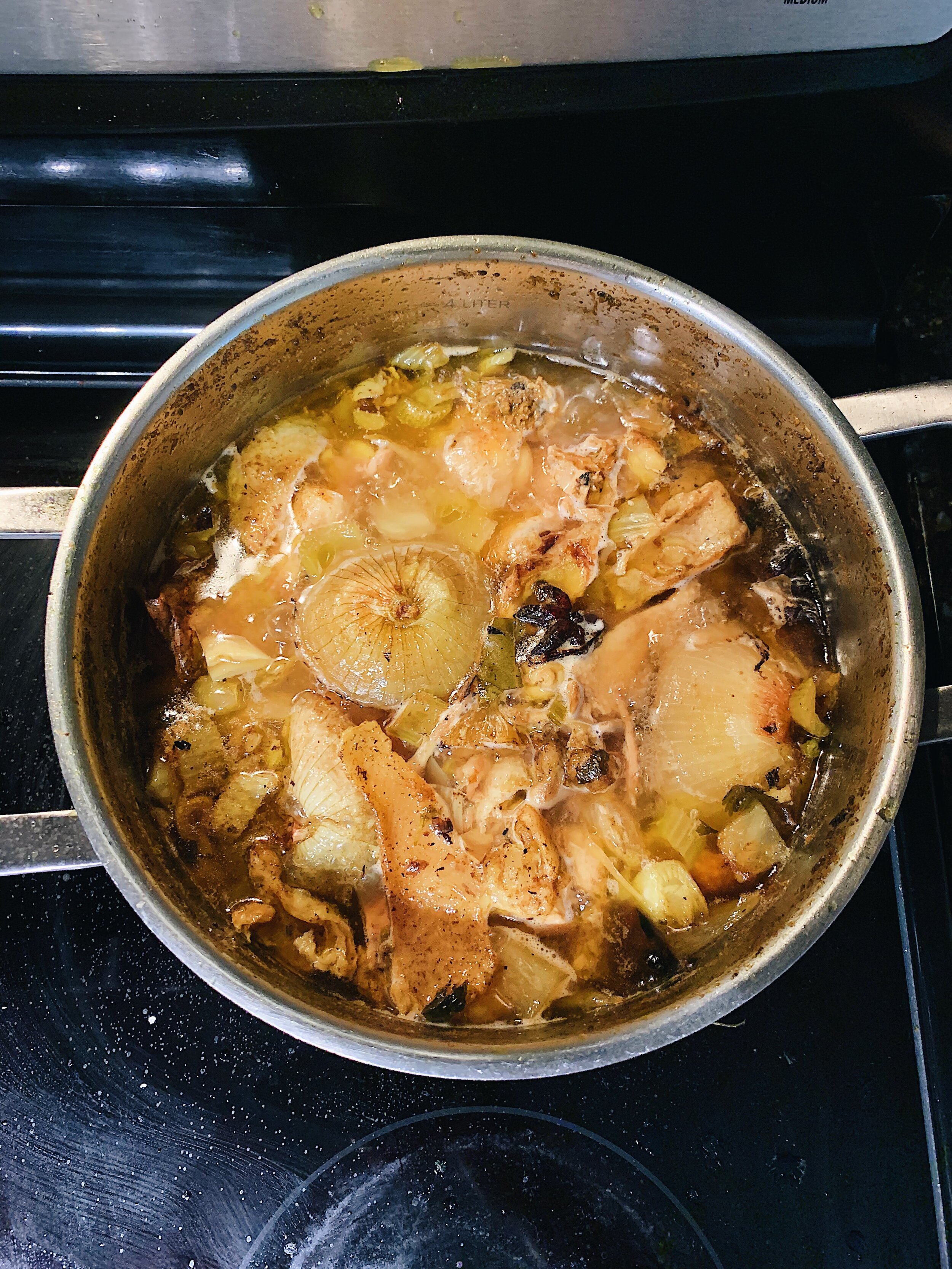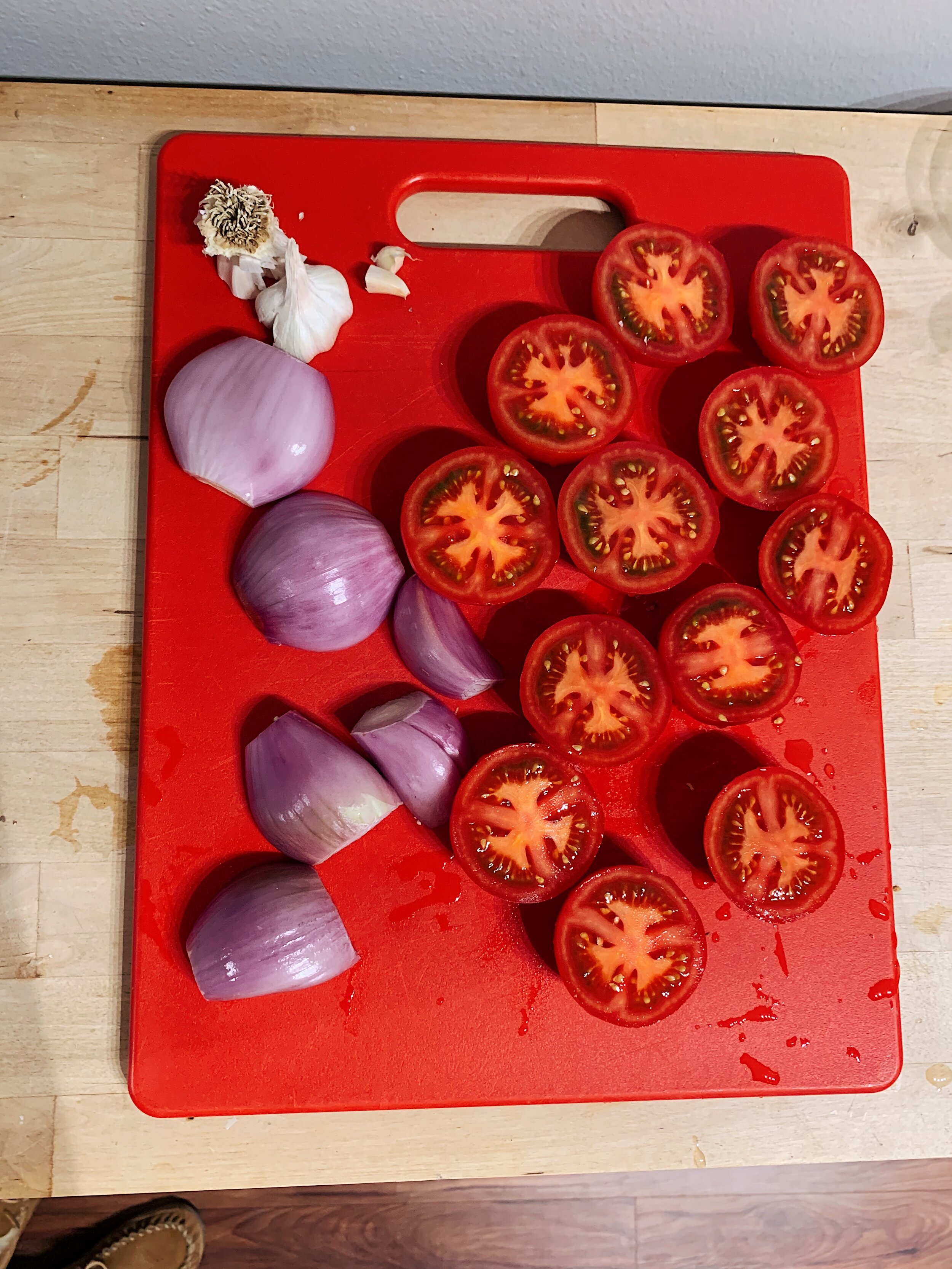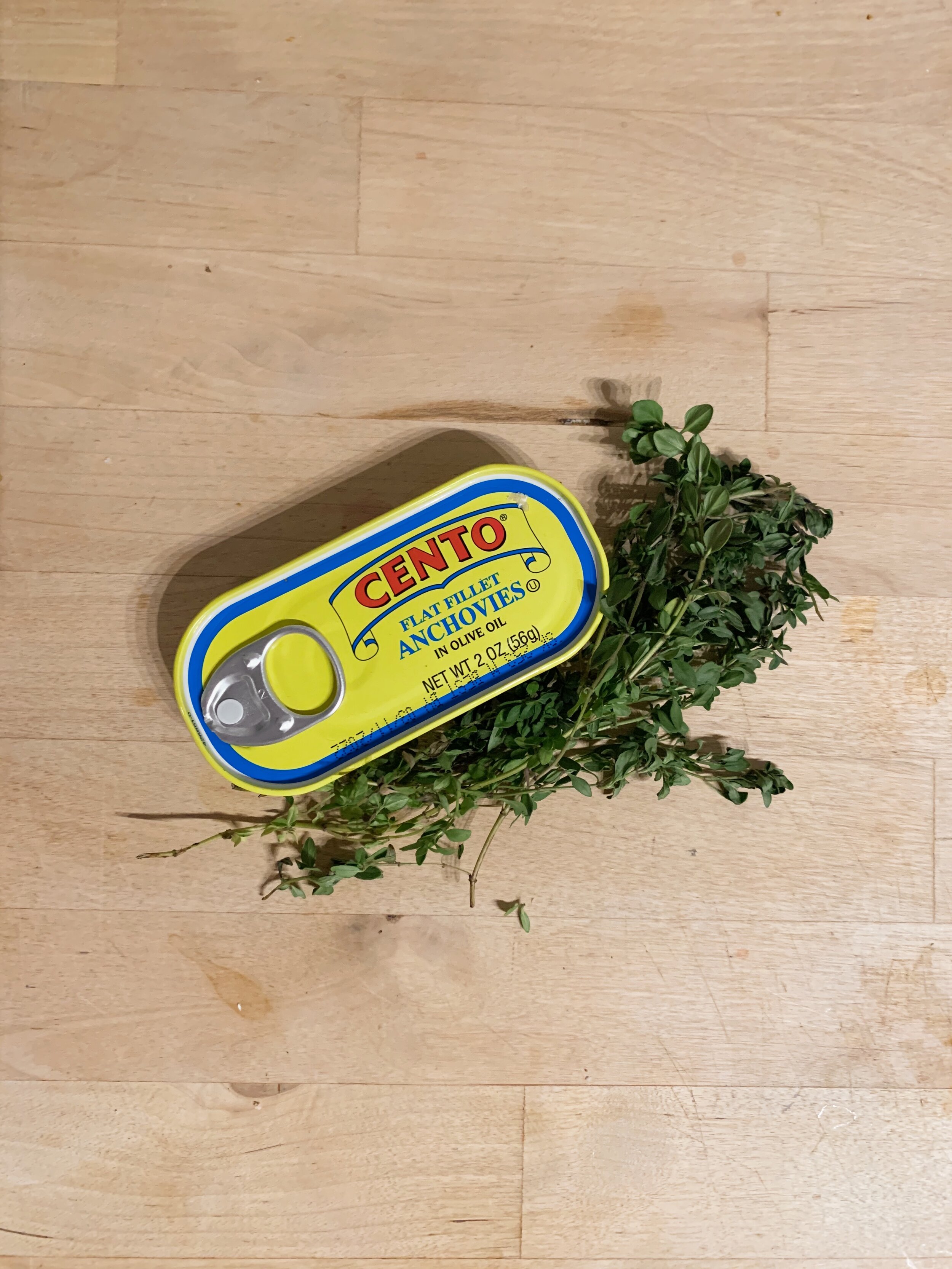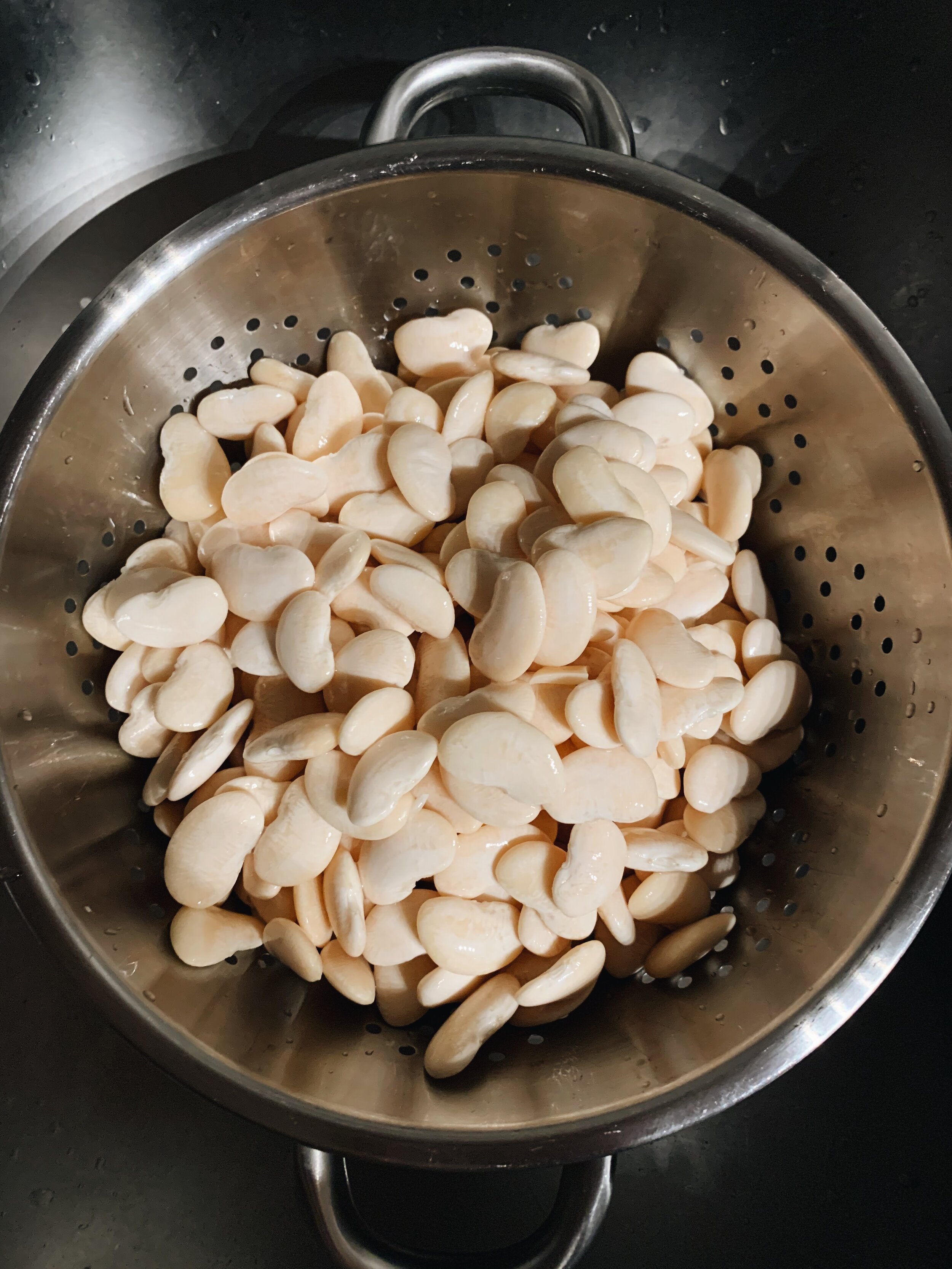For several months, I’ve been saving chicken bones. I’d come to save several backbones from spatchcocked chickens, a couple of wings from recipes that just wanted thighs and breasts, and cooked, uneaten scraps that no one wanted. I was saving them all to make my very first homemade chicken broth.
What better occasion to make this broth than in preparation for my second Covid-19 vaccine. We knew from friends and family that the second Moderna vaccine could warrant some less than desirable symptoms. The alleged window to appear was 8-12 hours post shot. So as soon as I returned home from my early morning vaccine, I got to work making this broth.
First step is to place an onion, cut in half crosswise, and two heads of garlic, cut the same way, and a large piece of peeled ginger, cut-side down in the stockpot over shimmering canola oil. The goal is to get these ingredients a bit toasty, which takes only a few minutes. Alison specifies that she likes to keep the onion skins on for the added color they provide.
Next, the other vegetables and spices are thrown in for softening: celery, chopped fennel bulb, bay leaves, whole star anise, and turmeric. Once these are slightly softened and equally coated in oil, the water and chicken bones get added. 12 cups of water and 3 lbs. of chicken bones to be exact. My bones were all frozen, so they were rather bulky at first, and I was afraid they wouldn’t fit in the stock pot. After several minutes of thawing, they eventually got unglued from one another, and sank to fit nicely in the pot.
Since some of my bones still had meat left, I removed them after 30 minutes of simmering to pull the meat off so it didn’t dry out. I saved these little scraps for the chicken noodle soup I’d make next. Bones, fat, and cartilage all go back in the pot, and the stock simmers for another 2-2.5 hours, or until it’s reduced by about a third.
The final step is to strain the broth. I used a large colander at first, just to catch all the chunky vegetables and bones. And then I used a smaller fine mesh strainer to catch any bits of bone or garlic that made it past the colander.
The broth was indeed a golden yellow, and had a really pleasant taste. There was certainly a layer of oily fat on top, which in hindsight I would probably try to scoop away partially. But the flavor of that fat is important, too. And all the rumors are true, you can definitely tell the difference between a homemade broth and a store bought box of broth.
Once the broth was ready, I made a simple chicken noodle soup, using Ali Slagle’s NYT recipe as a guideline, utilizing the broth and chicken scraps leftover from the bones. All of this was done by about 7 hours after my vaccine.
At hour 12, things got real. I suddenly had a high fever, terrible body aches, chills and sweats, and a throbbing headache. This lasted through the night (I didn’t sleep much) and I had a milder version of it throughout the next day. I spent that whole second day on the couch, and at one point fell asleep for four hours in the afternoon. I’m so grateful for the privilege of gaining immunity, but it sure wasn’t all smooth sailing. The chicken broth and noodle soup sure came in handy.
46 recipes cooked, 179 to go.
oh, she glows



